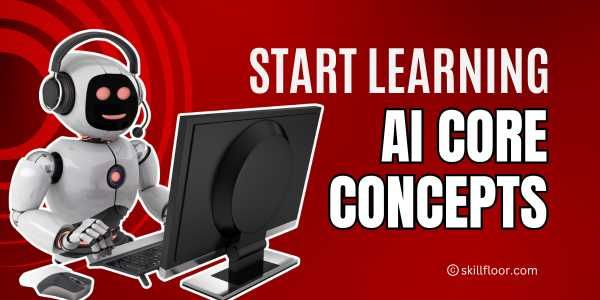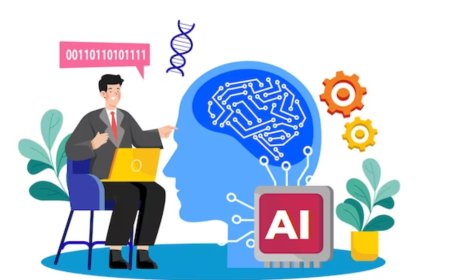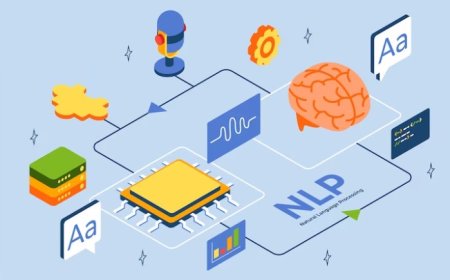How Does AI Work?
Discover how AI works and its applications. Explore the inner workings of artificial intelligence and its impact on various industries.

In an era where technology seems to conjure magic at every turn, few innovations have captured our imagination like Artificial Intelligence (AI). From self-driving cars that navigate our streets to virtual assistants that anticipate our needs, AI has woven itself into the fabric of our daily lives. But have you ever wondered how this wizardry works? How do machines, devoid of human consciousness, appear to think, learn, and make decisions?
The Basics of AI
Data Collection
Data is the lifeblood of artificial intelligence. AI systems start by gathering vast amounts of data, which can be either structured or unstructured. Structured data is organized and easy to process, like a spreadsheet, while unstructured data can be more complex, such as text, images, or audio. The quantity and quality of data play a critical role in the effectiveness of AI systems. The more data an AI system has access to, the better it can learn and make predictions.
Machine Learning
Machine Learning is the heart of AI. It's a subset of AI that focuses on developing algorithms and models that allow machines to learn from data. The process involves three key steps: training, testing, and inference. During training, the AI model is exposed to a labeled dataset, learning patterns and relationships between inputs and outputs. Testing assesses the model's ability to generalize from its training to new, unseen data. In the inference phase, the trained model is used to make predictions or decisions.
Neural Networks
Neural networks are a fundamental component of AI, especially in deep learning. They are inspired by the human brain and consist of layers of interconnected artificial neurons. Each neuron processes information and passes it to the next layer, allowing the network to extract features and patterns from data. Deep neural networks, with many hidden layers, have demonstrated remarkable capabilities in image and speech recognition, as well as other complex tasks.
Natural Language Processing (NLP)
NLP is a subfield of AI that focuses on enabling machines to understand, interpret, and generate human language. It's behind many language-related AI applications, including chatbots, language translation services, and sentiment analysis tools. NLP algorithms can analyze and make sense of textual data, making it possible for AI to communicate and interact with humans through natural language.
Neural Networks
Neural networks are a fundamental concept within the realm of artificial intelligence and machine learning. They are computational models inspired by the structure and functioning of the human brain. Neural networks play a pivotal role in many AI applications, including image and speech recognition, natural language processing, and autonomous systems. Here's a breakdown of neural networks:
-
Inspired by Biology: Neural networks draw inspiration from the way our brains process information. Just as our brains consist of interconnected neurons that communicate with each other, artificial neural networks consist of layers of artificial neurons, also called nodes or units.
-
Layers and Neurons: A neural network typically comprises three main types of layers: the input layer, one or more hidden layers, and the output layer. Each layer consists of numerous neurons. The input layer receives data, and the hidden layers perform various computations on this data. The output layer produces the final results or predictions.
-
Weights and Activation Functions: Connections between neurons have associated weights. These weights determine the strength of the connections, and they are adjusted during the training process to optimize the network's performance. Each neuron also employs an activation function that processes the weighted sum of inputs and produces an output for the next layer.
-
Training: Training a neural network involves presenting it with labeled data (input-output pairs) and adjusting the weights to minimize the difference between the network's predictions and the actual outputs. This process, often referred to as backpropagation, uses optimization algorithms like gradient descent to fine-tune the network.
Natural Language Processing (NLP)
Natural Language Processing (NLP) is a fascinating and rapidly evolving subfield of artificial intelligence (AI) that focuses on the interaction between computers and human language. NLP seeks to bridge the gap between the way humans communicate and the capabilities of machines to understand, process, and generate natural language. This technology has found widespread applications across various domains, from chatbots and virtual assistants to language translation services and sentiment analysis tools.
At its core, NLP involves the development of algorithms and models that enable machines to decipher and interpret human language in its various forms, including written text and spoken words. This goes beyond simple keyword recognition and involves understanding the context, semantics, and nuances of language. NLP systems aim to comprehend the meaning, intent, and sentiment behind human communication, making them versatile tools for improving human-computer interactions.
One of the key challenges in NLP is dealing with the complexity and variability of natural language. Human languages are rich and diverse, with multiple dialects, idioms, and cultural nuances. NLP algorithms need to be robust enough to handle these intricacies while providing accurate and meaningful results. This often requires large datasets for training and sophisticated machine learning techniques, such as deep learning and neural networks.
In practical terms, NLP is behind many everyday technologies and applications that have become part of our lives. Virtual assistants like Siri, Alexa, and Google Assistant rely on NLP to understand and respond to voice commands. Language translation services such as Google Translate use NLP to convert text from one language to another while preserving meaning and context. In the field of healthcare, NLP can analyze medical records and clinical notes to assist in diagnosis and treatment planning.
Reinforcement Learning
Reinforcement Learning (RL) is a fascinating subfield of artificial intelligence (AI) that revolves around the concept of learning through interaction with an environment. Unlike other machine learning approaches, where algorithms are trained on labeled datasets, RL agents learn by making decisions and taking actions in their surroundings. Think of it as a process similar to how humans learn from experience, through trial and error.
At the heart of RL is the idea of an "agent" – a virtual or physical entity – that interacts with an environment. This agent takes actions based on its current knowledge or policy and receives feedback in the form of rewards or penalties, which helps it fine-tune its decision-making process over time. The ultimate goal of an RL agent is to maximize its cumulative reward by learning the optimal strategy or policy.
One of the key components in RL is the exploration-exploitation trade-off. The agent needs to balance between exploring new actions to discover potentially better strategies and exploiting its current knowledge to maximize short-term rewards. Striking the right balance is crucial for achieving optimal performance.
Reinforcement Learning has found a multitude of applications in various domains, ranging from robotics and autonomous systems to game-playing agents like AlphaGo and self-driving cars. In robotics, RL allows machines to learn complex tasks like grasping objects or walking without explicit programming. In gaming, RL has demonstrated superhuman capabilities in games like chess, Go, and video games. Furthermore, RL has been employed in optimizing business strategies, recommendation systems, and even healthcare treatments.
Computer Vision
Computer vision is a subfield of artificial intelligence (AI) that focuses on enabling computers and machines to interpret, understand, and make sense of visual information from the world, such as images and videos. Essentially, it aims to replicate the human ability to perceive and understand the visual world, allowing computers to "see" and extract meaningful information from visual data.
Here are some key aspects and explanations related to computer vision:
-
Image Analysis: At its core, computer vision involves the analysis of images and videos. It encompasses tasks like object recognition, image segmentation, and tracking. For example, computer vision can identify objects within an image, separate them from the background, and track their movements over time.
-
Feature Extraction: Computer vision algorithms often rely on extracting relevant features from images, such as edges, corners, textures, and colors. These features are used to characterize and differentiate objects or regions within the visual data.
-
Machine Learning and Deep Learning: Many computer vision applications employ machine learning techniques, particularly deep learning, which uses artificial neural networks to process and understand visual data. Deep neural networks have proven highly effective in tasks like image classification, facial recognition, and object detection.
-
Object Detection: One of the most prominent applications of computer vision is object detection. This involves identifying and locating specific objects or entities within images or videos. Object detection is widely used in autonomous vehicles, surveillance systems, and augmented reality applications.
-
Image Classification: Image classification is the task of assigning a label or category to an image based on its content. For instance, it can classify images of animals into different species or identify handwritten digits in optical character recognition (OCR) systems.
Artificial Intelligence is a fascinating field that continues to advance rapidly, with new breakthroughs and applications emerging regularly. While AI may seem like magic, its underlying principles are grounded in data, machine learning, neural networks, and various specialized techniques. As we continue to explore the boundaries of AI, it's essential to consider the ethical implications and potential consequences of its widespread adoption. Understanding how AI works is the first step in harnessing its potential for the betterment of society while mitigating its risks.




























































